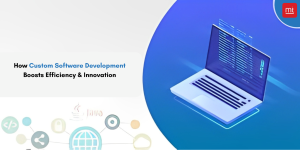Unveiling the Wonders of Embedded Software Development

In the ever-evolving landscape of technology, one domain that consistently stands out is embedded software development. From the smallest IoT devices to the most complex automotive systems, embedded software is the invisible force that drives modern life. In this comprehensive guide, we will delve deep into the world of embedded development, exploring its intricacies, challenges, and the vital role it plays in our interconnected world.
What Is Embedded Software Development?
Defining Embedded Software
At its core, embedded software refers to the code and programs that run on embedded systems. These systems are specialized computing devices integrated into other devices or systems to control and monitor their functionalities. Unlike general-purpose computers, embedded systems are designed for specific tasks, making them highly efficient and reliable.
Embedded software can be found in various applications. An established IoT development company in the USA can create different apps ranging from consumer electronics like smartphones and smart appliances to critical industries such as healthcare, automotive, aerospace, and industrial automation.
Key Characteristics of Embedded Software
Embedded software is distinct in several ways:
- Resource Constraints: Embedded systems often have limited resources in terms of memory, processing power, and storage. Developers must optimize their code to work within these constraints.
- Real-Time Operation: Many systems require real-time operation, where tasks must be completed within specific timeframes. This is crucial in applications like autonomous vehicles and medical devices.
- Diversity of Hardware: Embedded systems can run on a wide range of hardware platforms, including microcontrollers, FPGAs, ASICs, and more. Developers need to adapt their code to each platform.
- No User Interface: Unlike general-purpose computers, most systems lack a user interface. Interaction typically happens through sensors, actuators, or communication protocols.
The Embedded Software Development Process
Steps in Embedded Software Development
Embedded development is a structured process that encompasses several key steps:
- Requirements Analysis: Understand the system’s requirements, constraints, and functionality. This step sets the stage for the entire development process.
- Design: Create a detailed design of the software, specifying how it will interact with the hardware and what algorithms it will use.
- Coding: Write the actual code, keeping in mind resource constraints and real-time requirements.
- Testing: Thoroughly test the software to ensure it functions as expected. Testing may include unit testing, integration testing, and system testing.
- Optimization: Optimize the code for performance, memory usage, and power efficiency. This step is critical in the systems due to resource constraints.
- Integration: Integrate the software with the hardware and other components of the system.
- Validation and Verification: Verify that the system meets its requirements and is ready for deployment.
- Maintenance: Software requires ongoing maintenance and updates to address issues, improve performance, and adapt to changing requirements.
Tools and Technologies
Embedded development relies on various tools and technologies, including:
- Integrated Development Environments (IDEs): Popular IDEs like Eclipse, Keil, and IAR Embedded Workbench provide a comprehensive environment for coding, debugging, and testing.
- Programming Languages: Common programming languages for development include C, C++, and Assembly. The choice depends on the hardware and project requirements.
- RTOS (Real-Time Operating Systems): RTOSs like FreeRTOS, VxWorks, and μC/OS-II provide scheduling, task management, and synchronization features for real-time applications.
- Version Control Systems: Tools like Git help manage and track changes in the codebase, facilitating collaboration among developers.
- Simulators and Emulators: These tools allow developers to test their code without the actual hardware, saving time and resources.
Challenges in Embedded Software Development
Real-Time Constraints
Meeting real-time requirements is one of the primary challenges in the software development. Failing to respond within specified timeframes can have critical consequences, especially in safety-critical applications such as medical devices and automotive systems.
Resource Optimization
Resource constraints, such as limited memory and processing power, demand meticulous optimization. Developers at every embedded company must carefully manage resources to ensure the software runs efficiently.
Hardware Variability
Systems often run on diverse hardware platforms. Adapting the software to different architectures and peripherals can be a complex task, requiring in-depth knowledge of the hardware.
Security
Security is a growing concern in the systems, particularly in IoT devices. Ensuring that data and communications are secure is essential to protect against potential threats.
Long Product Lifecycles
Many systems have long product lifecycles, often spanning decades. This requires developers to plan for long-term support, including updates and maintenance.
The Ubiquity of Embedded Software
Industries Relying on Embedded Software
Embedded software is pervasive and is found in various industries, including:
- Automotive: Controls engine management, infotainment systems, and advanced driver-assistance systems (ADAS).
- Medical Devices: Powers devices like MRI machines, pacemakers, and insulin pumps.
- Industrial Automation: Drives robotics, manufacturing processes, and control systems.
- Aerospace: Manages avionics, navigation, and communication systems.
- Consumer Electronics: Powers smartphones, smart TVs, and IoT devices.
The Internet of Things (IoT)
The IoT is a prime example of the omnipresence of embedded software. It connects billions of devices worldwide, and these devices rely on embedded software to function and communicate. From smart thermostats to wearable fitness trackers, software is the invisible thread that weaves the IoT ecosystem together.
Conclusion
Embedded development is a dynamic and indispensable field in the realm of technology. It is the driving force behind the devices and systems that shape our daily lives, from the simplest gadgets to the most complex industrial machinery. As the demand for smarter, more efficient, and interconnected devices continues to grow, so does the significance of the IoT software.
As developers and engineers continue to push the boundaries of what the systems can achieve, it’s essential to stay updated with the latest technologies, best practices, and solutions to tackle the unique challenges that IoT development presents. The journey of crafting high-quality software is a remarkable one, and it’s a journey that’s intricately intertwined with the future of technology itself.
FAQ
What is the role of an RTOS in embedded software development?
A Real-Time Operating System (RTOS) plays a crucial role in development by providing the necessary services for managing tasks, scheduling, and ensuring real-time performance. It allows developers to design and implement systems with precise timing requirements, making it suitable for applications like automotive, medical devices, and industrial automation.
Which programming language is best for embedded software development?
The choice of programming language for development depends on factors like hardware, project requirements, and developer expertise. C and C++ are popular choices due to their efficiency and portability. For low-level control and performance-critical applications, Assembly language may also be used.
What are the key considerations for optimizing embedded software?
Optimizing software involves balancing factors such as code size, execution speed, and power consumption. Developers should pay attention to efficient algorithms, careful memory management, and reducing unnecessary processing. Profiling tools can help identify bottlenecks in the code.
How does embedded software development address security concerns?
Security in software is addressed through practices like secure coding, encryption, and authentication. Developers must also implement security features to protect against threats like unauthorized access and data breaches. Regular updates and patch management are essential to maintain security over the long lifecycle of systems.
What are some common challenges in embedded software maintenance?
Embedded software maintenance can be challenging due to the need for backward compatibility, long product lifecycles, and evolving hardware platforms. Developers must plan for updates, bug fixes, and security patches while ensuring minimal disruption to the existing systems. Comprehensive testing and version control are critical in this phase.






